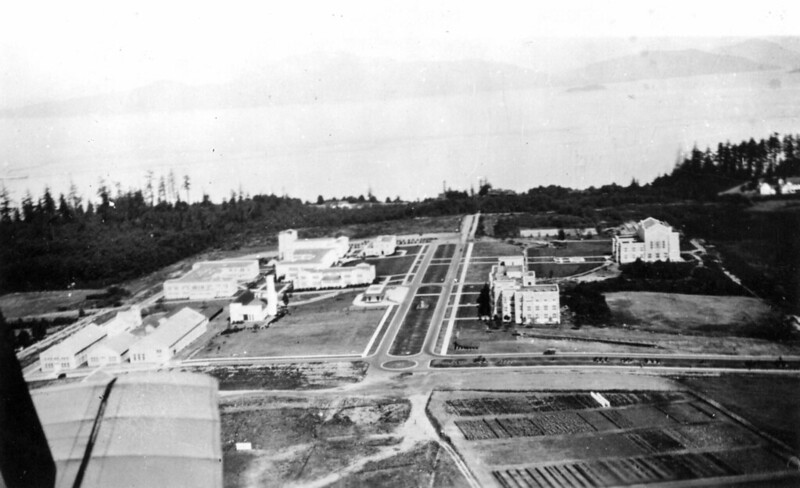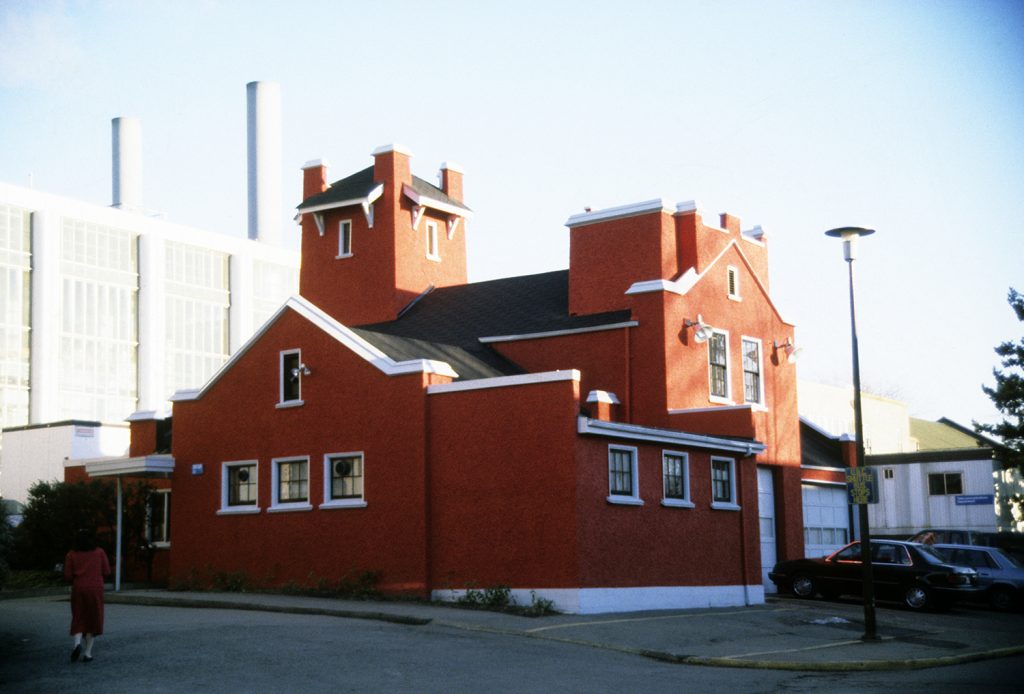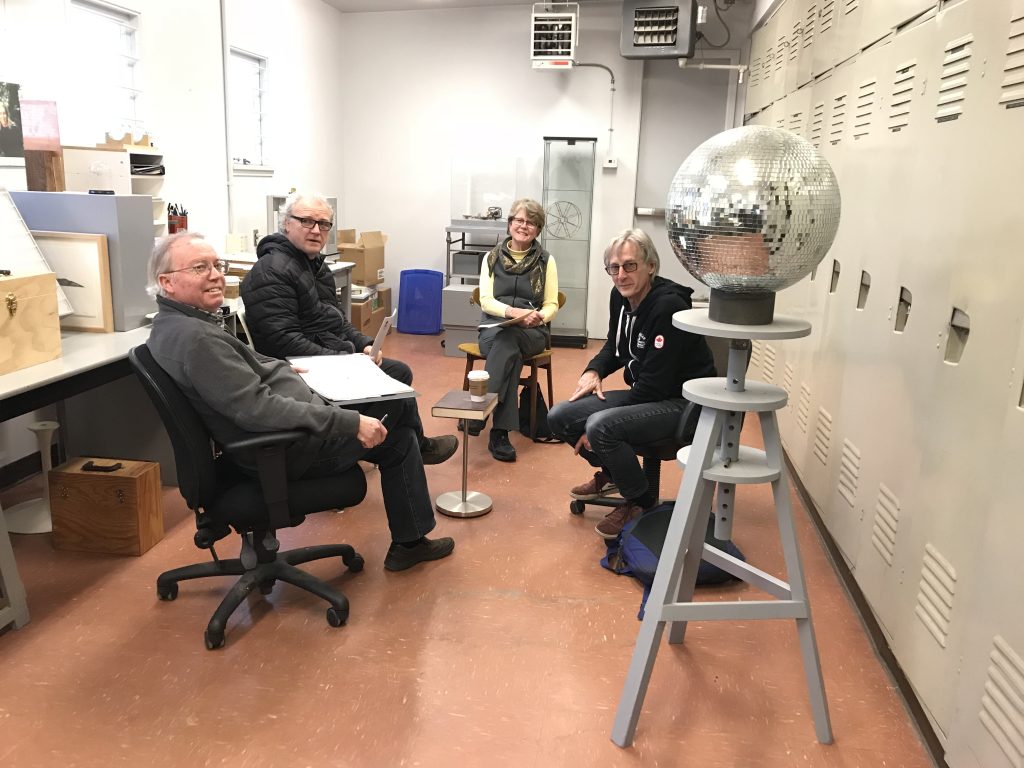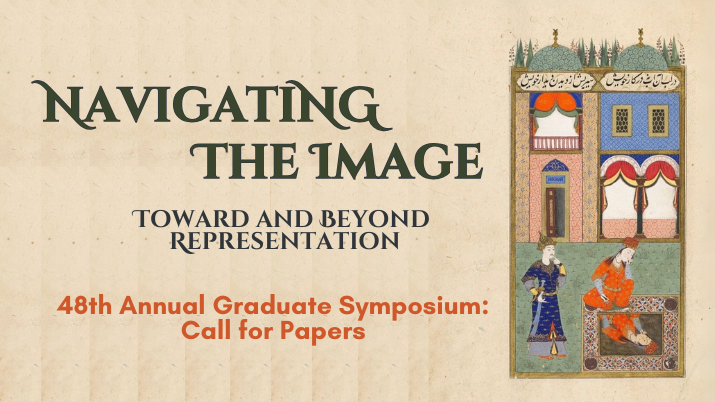Preparations underway to move Old Fire Hall on the morning of November 7, 2024. Photo: Richard Prince.

The Department of Art History, Visual Art and Theory (AHVA) want to share that after almost 100 years in its original location, the Old Fire Hall will move to a new site on Wednesday, November 13, 2024. For more than forty years, until this past summer, the Old Fire Hall was an active AHVA studio research facility and a beloved architectural curiosity on West Mall for passersby from the UBC community.
Many AHVA artists have worked in the studios at OFH over the last four decades:
Wendy Dobereiner
Gareth James
Dustin Keller
Phil McCrum
Richard Prince
Ben Reeves
Marina Roy
Jeremy Todd
Judy Williams
Robert Young
Barbara Zeigler
The Old Fire Hall is moving as a result of the Sauder Expansion project, and is being preserved due to its heritage significance. Its initial temporary site will be the lot east of the Life Sciences Building and this first move will take place from 9:00 a.m. to 5:00 p.m. tomorrow. We do not know yet what the replacement studio space will be for AHVA artists.
While you may choose to mark this change in your own personal way, some of us will gather together on Wednesday to bid the Old Fire Hall adieu.


Aerial view of UBC campus. Date Created: 1931. UBC 1.1/16352. Part Of: UBC Historical Photograph Collection.


University of British Columbia – Old Fire Hall. Photo from Dr. Rhodri Windsor-Liscombe donated to the AHVA-VRC (2016)


AHVA faculty artists, Richard Prince, Phil McCrum, Barbara Zeigler, and Barrie Jones meeting in Old Fire Hall, December 2017. Photo: Andrea Tuele.
Richard Prince, Professor Emeritus reflected in 2023
Some ancient history is appropriate at this time.
The acquisition of the OFH was an odd and almost miraculous circumstance. In 1984, there was a need for our department to find a solution for a classroom appropriate to our growing first-year studio course (FINA 181.) Delegated by our Head, Jim Caswell, I contacted whomever was in charge of handing out teaching spaces and we agreed to meet and wander about the campus looking at rooms that might suit our needs. This was 1984 and, if memory serves me, which it may not, his name was Graham Argyle. He had a ball of keys as large as a Tuscan melon and we walked over much of the campus looking at various possible spaces mostly in the northwest quarter and fairly near to Lasserre. We had surveyed available rooms in the Scarfe Building (Education) and were heading north along West Mall. We walked past the Old Fire Hall. I was aware that quite recently the new fire and police building had been completed and was now occupied on Wesbrook Mall near 16th Avenue, replacing the OFH and the “Cop Shop” at the corner of Allison Road and University Boulevard.
As we passed the OFH, I asked him what was going to happen to the OFH now that it was empty. He said that the plan was to store the lawnmowers from Plant Ops in it for the next year and then demolish it. I asked if I could look inside, so he opened the door and in we went.
In 1978 Geoffrey Smedley had been brought in by our Head, George Knox, as Professor and to be the leader of the Studio program. Smedley had gone to the Dean, Bob Will, and asked that he be given a studio space and some support for purchasing machinery. His rationale was that at a major research university the artists should be treated like the chemists. Chemists have labs and artists should have studios. The Dean bought the argument and gave Smedley his studio and provided some funding for equipment. He had been granted a large studio in the old and recently abandoned Civil and Mechanical Engineering building that is now the Somerset Studio. His studio was what is now our foundation studio but had been the Engineering workshop complete with overhead shafts powering belt driven industrial machinery.
I had this in my mind as I entered the OFH. We walked through it, and I knew that it was not suitable for a teaching space without major renovations for which I could not envision a source funds. Nevertheless, I thought it would make splendid faculty studios. “Splendid” is a relative term and at the time any space could be splendid. There were three washrooms and so could accommodate three faculty as long as they were not too fussy. I looked at Mr. Argyle and said our department could make very good use of this building rather than storing lawnmowers for a year and then demolishing it. He looked at me and said (and it was so surprising that I have remembered every word), “I am retiring next week. Why don’t we go to my office now and we can complete the paperwork.” Could that happen now?
And so that is how we got the Old Fire Hall.
Read more about Old Fire Hall:


